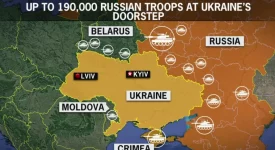For decades, the EU and USA have been at loggerheads over their approaches to the protection of geographic indicators (GIs). GIs represent a sub-set of intellectual property rights (IPR), which are based on the protection of reputational, traditional and special characteristics of products associated with particular locations. Whilst the most well-known examples of GIs include wine and spirits like Champagne, Bordeaux or Chablis, they also apply to agricultural and food products (e.g. Roquefort cheese) and other traditional products. The reputation attached to many of these products enables them to command higher prices in the marketplace.
The European Union has established the most comprehensive protection for geographical indications through an extensive register of protected geographical indications for foods and beverages (GIs), which encompasses over 1400 food and agricultural products and over 3000 wines and spirits), including non-EU products that have been incorporated as a result of bilateral agreements. Once a product is registered (after its compliance with the geographical rules is verified), it gains automatic protection. No other similar product produced elsewhere can use that GI in its name or brand identity, even when the exact origin of the product is made explicit.
For its part, the USA protects GIs in the same way as other forms of intellectual property and brand identity, through the issuing of trademark protection, meaning that a brand name including words associated with GIs can be trademarked, and whoever registers the trademark first gets the right to protection. Before the creation of the EU GI register system, European GIs denoting types of wines and spirits, cheeses and other products had become common as ‘generic’ descriptors for a type of product (e.g. cheddar cheese, feta cheese, sherry). The USA has since opposed the automatic granting of protected GI status and associated exclusive use to those GIs it considers have become ‘generic’ terms.
Through its bilateral network of trade agreements, the EU has extended protection for some of its core GIs. In the EU-South Korea FTA, the EU gained protection from Korea for 164 EU wines, spirits, foodstuffs and agricultural products from its GI lists. Korea gains acceptance of 64 of its GIs into the EU’s lists. The USA’s FTA with South Korea, by contrast, covers GIs under the Intellectual Property Chapter and deals with these alongside trademarks. Its main concerns are procedural regarding how a claim for protection can be made, and prohibiting the use and grant of trademark or GI protection to products that may cause confusion with already existing trademarks
The EU’s FTA includes a separate chapter under Intellectual Property devoted exclusively to GIs. It deals with procedures for applying for GI recognition, protection for GIs, and the establishment of a joint working group on GIs tasked with sharing information on GIs, GI legislation and policy-making, and with modifying and adding GIs to the list of GIs protected under the Agreement in Annexes 10-A and 10-B. This section also prohibits the use of GI-associated terms even when accompanied by ‘style’, ‘method’ to any goods not originating in the GI, and bans the granting and use of trademarks to products using names under GIs.
The latter is the element that could conflict with the USA’s approach. In fact, it has led to the creation in the USA of a Consortium of Common Food Names, campaigning against the EU’s inclusion of its GIs in bilateral FTAs. The Consortium claims it is not against GIs per se but rather their use even in cases where the name has become generic for a type of product (e.g. cheddar cheese), which lies at the crux of the EU and USA divergent approach. Indeed, as negotiations between Korea and the EU and USA coincided in time, American dairy producers, concerned with the GIs in reference to cheese, demanded the USA government receive assurances from Korea that the EU FTA would not restrict their ability to sell their product in Korea. As it is, the EU FTA only covers a few French and Italian cheeses and not cheddars which the American producers were concerned about.
The High Level Working Group (HLWG) recommendations for the Transatlantic Trade and Investment Partnership (TTIP) included tackling regulatory divergence via mutual recognition, equivalences and harmonization in the future. The section on IPRs is one of the vaguest and fails to mention GIs. It merely ‘recommends that both sides explore opportunities to address a limited number of significant IPR issues of interest to either side, without prejudice to the outcome’. It is unclear what does limited issues will be, but the implication is that the parties are aware of the difficulties in making some of their approaches compatible.
The recently completed EU-Singapore FTA may provide an avenue out of this deadlock and possible pathway for the resolution of divergent GI regimes in the TTIP. By contrast to other EU FTAs, in the Singapore FTA, Singapore did not accept to grant automatic recognition and protection to a limited list of key EU GIs. Singapore had no list of its own GIs for which it wanted protection. Moreover, its IP underwent large reforms in 2004 so as to comply with the Singapore-USA FTA. In this FTA, Singapore agreed to the USA style of GI trademark protection and accepted the ‘first-in-first-in-right’ principle, which would make the automatic protection of a GI list, and possible revocation of any prior trademarks with that name incompatible with its own laws. Instead the EU and Singapore have agreed to allow Singapore to develop its own GI register system. Once in place, EU GIs will be submitted for review and potential protection under the register. A list of priority GIs has been produced, and in an exchange of letters, Singapore has agreed to expedite the processing of this list and to accept the evidence for GI status that EU GI holders have already submitted to the EU system. Singapore is currently considering various GI register systems (EU, Australia, New Zealand) and designing its own system. However, with the Singaporean case, a new concept and possibility has been established that diverts from the previous automatic recognition of a list of GIs in other FTAs, and which may often a compromise for future agreements including TTIP.
Dr. Maria Garcia is a researcher at University of Nottingham in the UK. She was a Marie Curie IOF Fellow at the National Centre for Research on Europe, University of Canterbury, New Zealand. Her research focuses on the EU’s trade policy and the impact of competitors’ policies in the profusion of free trade agreements.







